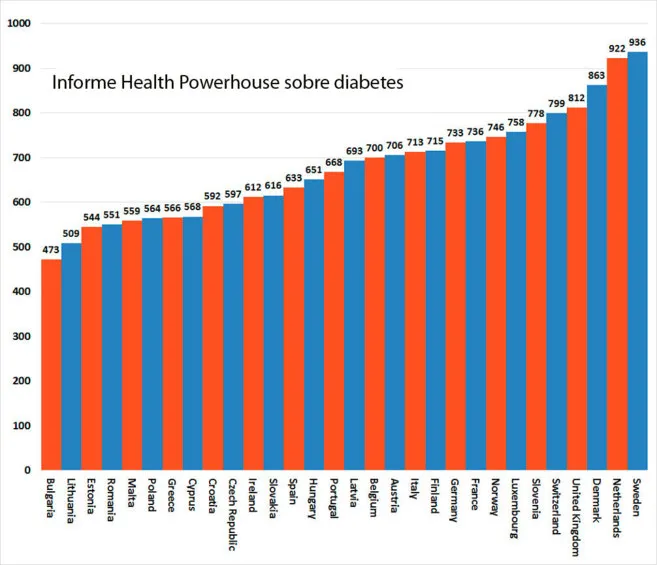In addition to the inequalities between autonomous communities, the lack of a national registration of patients or the annual monitoring of the complications that diabetic patients can suffer from Spain's position in the European index that has just presented the Health Consumer Powerhouse group in the courseof the European Congress on this pathology that is being held in Vienna (Austria).
Depending on the valuation of 28 indicators analyzed by this non -profit organization dedicated to the comparison of paneuropean data, Spain appears in the 18th position of the 30 countries analyzed (the twenty -eight that make up the European Union with Norway and Switzerland), behind nearby neighbors such as Italy or Portugal or nations with a lower GDP such as Slovenia and Hungary.
In this sense, the high obesity rates, together with the sedentary lifestyles or the low regular control rate of glucose among Spanish patients influences that position in the second half of the table (with 633 points in front of the936 of 1,000 that obtains the best placed, Sweden).
As Dr. Beatriz Cebolla, one of the authors of the review, the inequalities between autonomous communities in some aspects "are scandalous", as it is the case of access to treatments or the education of patients."For example, in the case of checks to detect in time the possible complications of diabetes depend greatIt is something totally random, "says this specialist.
That same heterogeneity is appreciated in the systematic detection of the disease in patients at high risk of developing it or in access to insulin bombs, "insufficient and irregular", in your opinion."Many patients who could benefit from these devices simply do not put them because their doctor does not have the necessary time or equipment to educate him in use."
An upward pathology
Taking into account that this disease causes one in 10 deaths in Europe (619,000 in 2013) and affects 32 million Europeans (a figure that could grow to 38 million 2035), the authors of this document consider essential to establish certain certainMeasures throughout the continent to make the diagnosis and treatment of this disease more efficient.In fact, it is estimated that only last year, care for diabetic patients cost Europe between 100,000 and 150,000 million euros.
Despite the forecasts that indicate a progressive increase in diagnoses, the report denounces that only seven of the 30 countries have an updated patient record (it is not the case of Spain) and just none of them has early detection programsAmong individuals with high risk of developing diabetes.
Periodic reviews that are required to anticipate some of the most frequent complications of these patients, such as diabetic retinopathy or amputations of the lower limbs, are also unequal in Europe.
This NGO denounces that in recent years, many of the states are imposing restrictions or copagos to the supply of material (such as glucose strips) necessary for adequate control and monitoring of patient sugar figures."In Spain, this is not a problem for the type patient, which is being treated with insulin, but in people with oral treatment, insulin strips are much more restricted and you barely reach the minimum," adds onion.
Despite the lagoons pending to resolve, the document admits that the improvements experienced in recent years (healthier lifestyles, better access to treatment,Patients more formed in their pathology ...) have allowed to reduce annual mortality by diabetes in Europe around 10% (which means having saved around 10,000 lives each year).
Source: Link



